Junkers flying giant, the first: Ju-290A-7
About the original: the Ju-290
The sight of an original Ju-290 must have been extremely impressive. The sheer dimensions of this large aircraft were awe-inspiring: at an extraordinary 42 metres from wingtip to wingtip and a length of around 29 metres, the Ju 290 was one of the largest flying giants of its time. The corresponding dimensions of an Avro Lancaster can well illustrate what this claim meant in reality: its wingspan and overall length of 31 and 21 metres respectively are a full ten metres less - and a Lancaster is by no means a dwarf!
Impressive are also the performance data in which the Ju-290 moved through its element: up to eight tons of payload could be moved at a speed of 388 km/h over 2500 kilometres, unloaded the top speed increased to 420 km/h and a range of an astonishing 6000 kilometres. The service ceiling remained below 7000 metres, so the Ju-290 did not need a pressurised cabin. The giant was powered by four BMW 801A twin star engines, each producing 1560 hp.
The Ju-290 not only radiated modernity in its external design, but also had the finest and latest technical equipment installed in its interior. Remarkable was, for example, the innovative "Trapo KLappe", a large-sized loading flap that could also be opened in flight, allowing even the bulkiest goods to be winched into the fuselage. This also reflects the original purpose of the Ju-290 in Luftwaffe service: the aircraft had been developed from the Ju-90 in 1942 in order to provide the Luftwaffe with an effective and contemporary transporter. The eight aircraft built of the first series version A-1 were accordingly also designed as transporters.
Ju 290s of this early series flew their first missions with KG 200 from January 1943 to supply the Stalingrad cauldron. The catastrophic circumstances led to disastrous losses. For example, forty-five of the 79 people on board died in the crash of the Ju 290 V1 alone, which was overcrowded with wounded: since the plane had to take off under enemy fire, the stretchers for the wounded to be flown out were not properly lashed down; during the violent flight manoeuvres necessary in the combat zone, the stretchers slipped backwards in the cargo hold, making the Ju 290 tail-heavy beyond repair. As a result, the aircraft, which was no longer controllable, stalled.
The last three aircraft of the A-1 series had already been converted into reconnaissance aircraft at the factory. In this role, the excellent range of the Junkers giant paid off. All further of the 51 Ju-290s produced until the end of production in 1944 were designed as reconnaissance aircraft.
The Ju-290 A-7 shown here with my model shows an innovation that had been installed for the first time in the 5 Long-Range Reconnaissance Group stationed in France: the FuG 200 Hohentwiel ship search radar made the Ju-290 an effective long-range maritime reconnaissance aircraft. This radio detection system had been designed to detect sea targets. Characteristic of this system is the set-up in the form of three "antenna trees": two mounted laterally on the left and right served to receive the returning signals, while the third, centrally mounted antenna mast functioned as a transmitter. Jagged deflections on the indicator pointed either to the left or to the right, informing the radio operator of the direction of the target. This method worked up to a range of about 150 kilometres.
My depiction shows one of these machines from the 5th FAGr. long-range reconnaissance group stationed in Mont-de-Marsan, south-west France.
About the kit and the building process
The two model kits of the Ju-290, which I used for my overall Ju-290 project, had been in my building stock for several years now. The final impetus to build them was the idea that a Ju-290 in flight, i.e. with the landing gear retracted and the propellers spinning, should actually look pretty good! While I was at it, I could build both examples in parallel. The attraction of this: what you learn in one building step you can apply to the second model straight away!
The first Ju-290 shown here has the imposing volumes of this large bird standing on the landing gear in the traditional form of representation, the second, "flying" Ju-290 will follow soon.
Revell's moulds are an in-house production from 2003; my A-7 shown here was realised with one of the new editions released in 2009. This was built "out of the box", with the Eduard seat belts being the exception that proves the rule. However, there is one ingredient which I would like to warmly recommend to all those interested: the antennas of the three "trees" on the nose were made from the Eduard etched parts set. This pays off, in my opinion the finished appearance is much closer to the original than the rather massive plastic parts from the kit would have allowed.
The rest of the comments on the parts and the resulting building pleasure can also only be formulated as praise. The accuracy of fit ranges from pleasant to impressive. The high complexity of the construction - the fuselage, for example, is not built from two half-shells as usual, but from several large and some small components - is justified and makes sense. I found it particularly pleasant that the layout of the parts ensures the strength and stability of the construction, which is especially important for such a large model. Last but not least: the decals are of excellent quality, by the way, they allow the construction of three machines, two of which are pleasantly different in their appearance.
At the end of a rather time-consuming building process, I am quite happy to have tamed this monster, although, as the previous text makes clear, it is not difficult with all the kit qualities. I can therefore recommend this model-building experience without reservation to anyone who is interested!
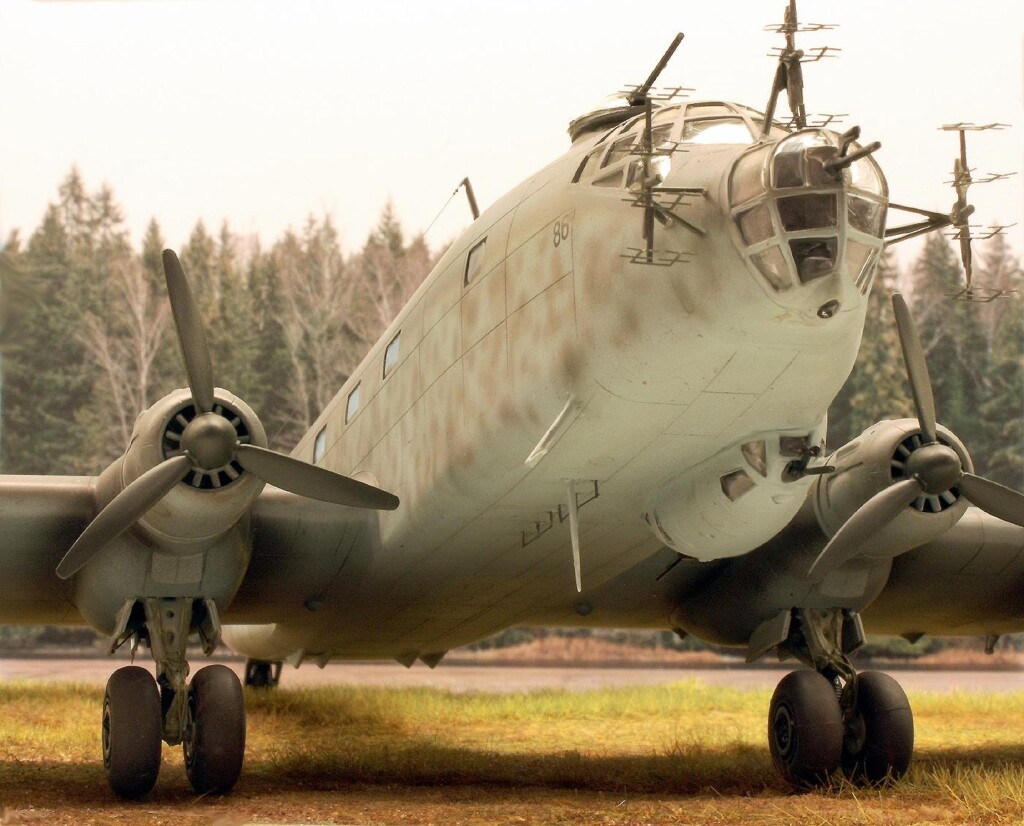
















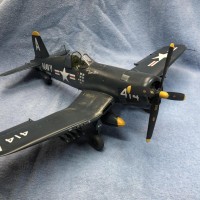
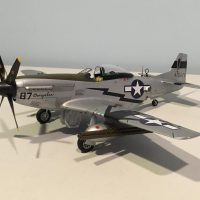
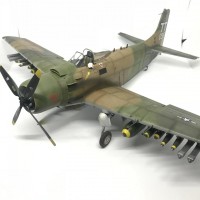
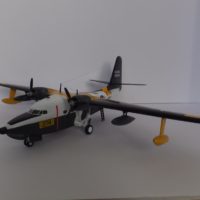
Roland,
Your photo's neatly tie in with the article with regards to the size of the Ju-290. With the forest in the back round and the hanger, the forced perspective, combined with the angle of the photo, gives a strong impression that yes this is a big aircraft. I might add the photos place the viewer on the ground relative to the aircraft as if they were on the air field. This is what a pilot, mechanic or gunner would see approaching the aircraft. I've written about this before, its a wordy affirmation to viewing a excellent model. It all works, the article, the clear sharp photos and the bench photos make for a easy, enjoyable read.
I didn't realize how many of these aircraft where built and one wonders why they weren't used to go after convoys in the Atlantic. It must have been too late in the war for the Ju-290 to be effective at anti-shipping.
Two thumbs.
Had to smash the like button.
Thank you Stephen! You describe exactly what is important to me and what gives me pleasure in model building - your words actually impress me very much - it is nice to be able to exchange ideas about one's own enthusiasm!
"Communicating ideas" that are not always done with words but, with photos and layering them with the written word is a gift. Being a effective communicator and knowing what you want out of a modeling project using multi-media is not easy. Your enthusiasm is appreciated.
Magnificent!
Thank you Mark!
I wonder how big is the model? It’s one of the biggest 1/72 planes out there I guess, no?
Fabulous model and background story Roland. Never read that V1 crash from Stalingrad cauldron before, thanks!
Check out Revell Germany's production of the BV 222 - winspan of 46m makes for an impressive 1/72 kit, but the Italeri Me 321 Gigant tops it
Thank you very much for your comments! Indeed, I seem to have the aircraft mentioned in my showcases - so I quickly put them together in an informative group picture. The three pictures illustrate quite nicely what Mika has so correctly described.
3 attached images. Click to enlarge.
That's is truly an impressive display! I don't know where you manage to display all of them, and they surely deserve to be on display
Beautiful work!
Thank´s a lot for your comment!
That is impressive in every aspect of the word! The photography is exemplary and reflects very much my own preference for taking shots of my models...we strive for authenticity so why then take an inverted picture resting on a couple of paint tins? The paintwork looks to be applied beautifully, especially the mottling which is difficult to achieve in any scale let alone 1/72nd, and the build craftsmanship is sublime, as you say, the aerials make it. Many congratulations, just fantastic!
Your words reinforce me and reflect my own view on the way to share about the completed models. Thank you for this great motivation!
Yet another Sachsenhofer masterpiece, thoroughly researched and splendidly executed. A joy to look at and a wonderful article/presentation.
Well done my friend!
I say thank you very much my friend! Your words mean a lot to me - I feel motivated!
Amazing build, Roland @rosachsenhofer
These larger aircraft are not easy to deal with during the build but you clearly managed to create a superb looking giant.
The photoshoot is fantastic as well, clearly showing the dimensions of this aircraft.
Your words make me happy - thank you for the positive review!
More wonderfulness from @rosachsenhofer Flugzugwerke. Really nice result here, Roland.
Tom, I'm glad to hear it! 🙂
Yep, like they said. Great model and pictures thereof. Waiting for the flying version.
Thank you for these motivating words! Oh yes, I am finishing the "flying" Ju-290- and I am already very curious how it will look like.
Giant Dead Birds brought back to life.
These particular models are some of my favorites Roland. Great decor too . Thanks for showing !
Bernard, thank you for your appreciation!
Another wonderful article from you, Roland.
Thank you George!
Dear Roland, ingeneous project, model building, photographing... Congratulations.
Georg, wonderful, that makes me happy and motivates me!
@rosachsenhofer, That is yet another truly splendid model Roland! 🤩 Impressive as it may be in size, equally impressive are your building and photography skills sir. I would love to see this on display along with the rest of your amazing work! 🍻
Very welcome words, I say thank you very much!
G'day Roland (@rosachenhofer),
A beautiful build.
It is one of the aircraft I would have loved to build back when I did build 1/72 (1970s and 80s).
Alas, it would be rather large in 1/48!
Liked!
Thank you Michael for the appreciation!
Beautiful build! Cool photos & a little history of the aircraft. Thanks for sharing!
Thank you for these words!
Beautiful build and post! Looks fantastic. I had this kit in my stash but sold it a few years ago (with other larger aircraft) as I decided I didn't have the room to store such large builds!
Greg, thank you for your interest and words of appreciation!